Last Updated on June 3, 2019
Product pages can make or break your online store.
It’s the page where a customer makes the final decision to buy, that this is the right product for them.
However they need to find it first, which is why on-page SEO for your product pages is essential.
So let’s look into the best practices for product page SEO and some examples to help guide your hand.
This guide is applicable to all CMS, including: Magento, Woocommerce, Shopify, Opencart and BigCommerce.
It Starts with Keywords and Cannibals
Top optimise a page you first need to know which keywords you’re going to optimise for.
However obviously many products will be very similar in characteristics, in which they could all serve the user perfectly fine.
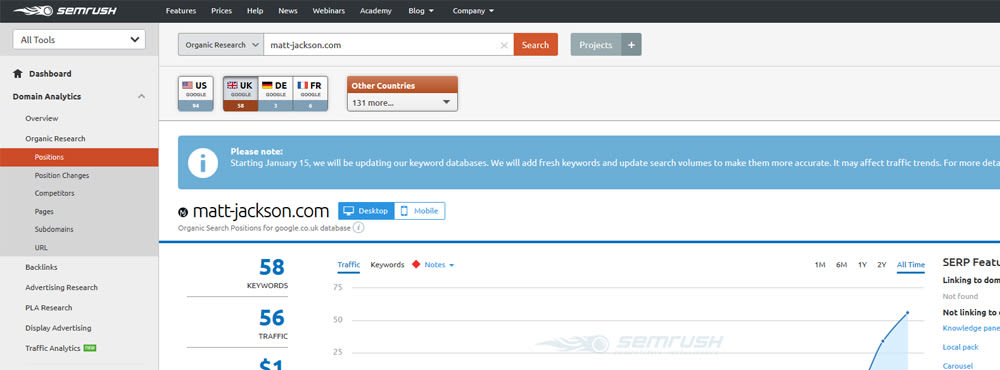
Even different brands of products will have similar variations, and compiling them into one product page could drop your conversions and increase bounce rate on the category pages (I’ll write a blog post about this at some point! [insert internal link some point in 2018!!]).
Now this is a problem because when products are all targeting similar keywords you end up with keyword cannibalisation, which means that they cannibalise each others search rankings, leaving you with two pages competing and not ranking as well as one would do on its own.
So to avoid this, we need to make sure that products are either targeting different keywords, or at least under-optimised for certain keywords.
Assigning Keywords to Product Pages
First perform some keyword research and do some Googling around your product terms, to see what pages currently rank in the top 3 for the terms.
This will help you understand what the current searchers believe is the most relevant to them (because of the effects of Rank Brain) and so you should label whichever product is most similar to these top 3 as to be targeting this keyword.
Another way of doing this is to take the #1 ranking page and see what other terms it ranks for within Ahrefs or SEMrush, which may help speed up assigning keywords to product pages.
The types of keywords you should consider for your product pages are:
- Keyword + Brand
- Keyword + unique identifiers (colours, sizes, specifications, etc)
- Singular versions of category page keywords (check to make sure Products are ranking in pos 1-3 first).
- Keyword + Model / SKU / USN
And once you’ve done this thorough research you should be ready to optimise / de-optimise.
Top 10 Product On-Page SEO Areas
The main areas to optimise your products for SEO are:
- Page Title
- Meta description
- URL
- Product name / H1
- Product description & H2
- Features & Specifications
- Tags
- Question & Answers
- Schema.org Rich Snippets
- Reviews
Here I will go over the basics of each one, they are mostly fairly straightforward.
Page Title for Products
The page title for products is what shows up first in Google, and so is the first time you get to encourage the user to click.
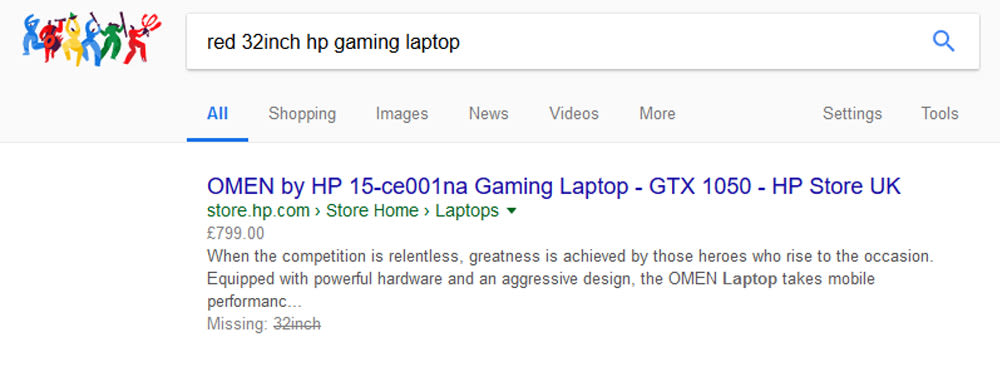
It should include the main keyword near the front of the title, with variations deemed relevant and important also included.
Another tip to use is to include “Buy …. Online … [Country Code]” in your titles (where country code stands for the two letter country short hand, for me it would be UK). This is because the product page is the quickest path for conversion, and people searching for “buy x online UK” don’t need convincing, and so are the best possible customers.
An example of a well SEO’d title tag for a product would be: Buy 32′ Inch Red HP Gaming Laptop Online – FREE UK Delivery
In this example our main keyword would be “Red HP Gaming Laptop”, and our additional keywords would be “32′”, and of course “buy, online, free delivery, UK”.
To create a useful preview of your snippet you can use this testing tool: https://websiteadvantage.com.au/Google-SERP-Emulator
Meta Descriptions for Products
If you customer hasn’t been convinced of the click by reading the title, then the meta description is your next chance to convince them to come to your website.
Here you should be including info about variations or secondary info that you couldn’t or didn’t want to include in your title. These might be key features or benefits of the product, delivery specific information about areas of a country, or simply the title benefits ordered in a different way.
Either way with the new meta description length now extending to about 3.5 lines in the SERP’s, you’ve got plenty of room to sell your customer.
An example of a good product meta description would be: Top level maroon red gaming laptop (also available in blue and black). i7 intel core processor, 12 GB of RAM + extra space. 750GB hard drive. Crazy AMD graphics card. Perfect laptop for high performance games like Battlefield, World of Warcarft, etc. Free delivery to the UK mainland (including Scottish Highlands).
You can see how this meta description mentions the key specs of the product, and includes why they might want one. It also contains information about shipping. You could make this even more eye catching by mixing the use of capitals and adding icons, but this could be done as part of a click through optimisation strategy.
Again using the snippet preview tool we can test the length to make sure we both sell the click and stay within the limit.
Urls for Product Pages
Now this will partly depend on the site structure that you’ve decided upon for your ecommerce website, but basically if your product canonical is from the root domain, then the url needs to be optimised for your full collection of keywords, for example:
domain.com/red-hp-32-inch-gaming-laptop
There may be times when this is an innapropriate or over-optimised url structure, such as when you have multiple categories involved in your canonical. In which case it should probably look like this:
domain.com/laptops/gaming/red-hp-32-inch-laptop-xxxx
Where the “xxxx” refers to a random product code or serial number for unique url purposes.
Product Names / H1 Headers
There are multiple areas to think of the product name (which should always be a H1), as they are used in multiple areas:
- Clickable link in category and search pages
- Displayed on top of product pages
- Displayed on mobile product pages
- Displayed in customer invoices
So you want to be as concise as possible to avoid they becoming too long, as they could make other areas of your website look messy, but you also need to get your main keywords in there to make sure it’s fully optimised.
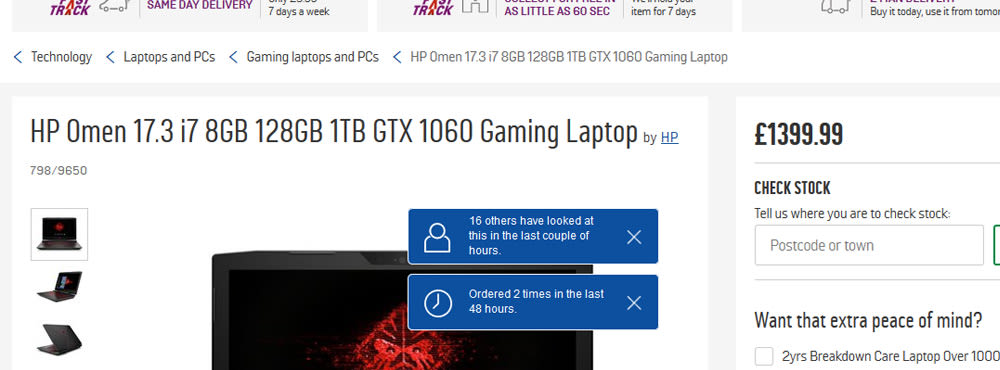
In our example a good product name would be: Red HP Gaming Laptop (32 Inch)
It could also be written with the size nearer the front, or with a dash instead of brackets, but you get the idea. Just make sure that no product page ever has the same name as another.
Product Descriptions
Now this is the main area where most ecommerce owners take shortcuts and therefore fail in SEO. You will often see online stores penalised by Panda that have copied manufacturers descriptions or used the same description with a minor change on all products.
This is a big problem, as the Google Panda algorithm was specifically designed to penalise products like this. It would be better to have no description at all then have a site full of duplicate descriptions.
An example of a good product description for our laptop would be:
This maroon red gaming laptop (also available in blue and black) has the highest spec i7 intel core processor and includes 12 GB of RAM with space for more. The 750GB hard drive has plenty of room to store large games such as Battlefield or World of Warcarft,.
The top level AMD graphics card will keep your eyes wide and entertained for years to come, with a fine rich pixel dynamic that makes every part of your favourite game jump out of the screen. The beat audio drivers add added depth to both base and treble sounds, which will immerse you into the game setting to make you feel like you’re actually there.
[Insert link to relevant category page, and similar product page, optimised anchors] – this allows you to internally link to other relevant pages, helping to boost their SEO efforts.
You could also split content up with H2’s to help break up the text so it is more easily digested by the consumer. In our example you could have sections for games, graphics, hard drive, etc.
Now in my ecommerce SEO checklist I mention a minimum of 200 words of unique content per product page (which that description is not), however you can fill this out with reviews and FAQs).
Features and Specifications for Products
Your ecommerce CMS will usually deal with these in a separate tab on the page, but once of the things to check is that Google can actually index these extra tabs.
Visit the fetch as Google page in Google Search Console and perform a Fetch and Render (then click through to see what Google saw) for your product page to ensure that Google can actually read it.
Tags
Don’t use them.
Well that may sound harsh, but honestly there are really no good ways of using tags without a lot of extra SEO effort.
If you use tags for internal processes then remove the links from the html code of your product pages and noindex the tag pages so that Google never considers them for search.
They create thin content pages that are susceptible to Panda, and they create cannibal pages that bring your category page rankings down.
If a term is important enough to have a tag, it’s important enough to have a sub-category / filter page dedicated to it as they’re just as easy to create.
Product Question and Answer Modules
One of the first websites I saw do this a few years ago was Home Depot and Amazon in the USA, in which each product page has a section to ask and answer questions related to the product.

This is great for SEO, as it captures important long tail keywords into your products (helping their rankings even more) and it adds a constant stream of fresh content to the pages (also great for rankings).
There will be a custom module out their most likely for your CMS, but if there isn’t then I highly recommend you get one custom coded (and then maybe sell it as a side business!).
Schema.org and Product Rich Snippets
In my main rich snippet guide for ecommerce I go into more detail on the ways to add schema.org to your products for various CMS and types, however the main one that is essential to products is quite obviously the Product Schema.org Markup (schema.org/Product).
This will help you create a nice rich snippet including the product Price, In Stock status, Review stars, and Aggregate rating.
This alone will greatly increase your click through rate in the search results and so improve your rankings as a result.
Reviews for Products
Linked to the above, having reviews creates the rich snippet stars which increase your CTR and rankings, so they’re essential to your product SEO efforts.
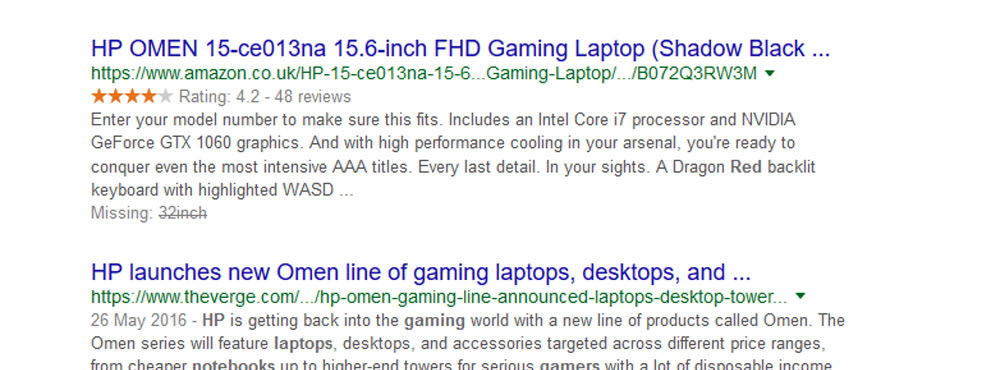
They also keep people on your page longer and make them more likely to buy your products as a result.
If you don’t already create an automated system to email customers requesting a review. However this can create barriers where people may not like to submit their review into a site or form etc.
The best response rate I have found is to simply email customers about their experience, asking if they had any recommendations on how you could do better and for what they liked.
This gets you a nice review and it looks genuine to them so you get more replies. You can then simply ask them if you can “quote them on that” on your website, and add the reviews in there yourself.
Need some help?
I could make things a lot easier for you with some consulting, through either a custom SEO audit, some hourly consulting (email info@matt-jackson.com) or some full blown ecommerce SEO services.

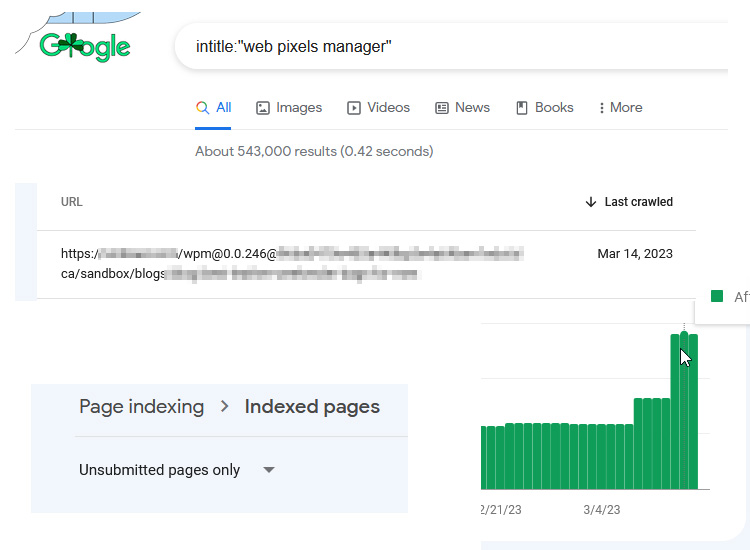

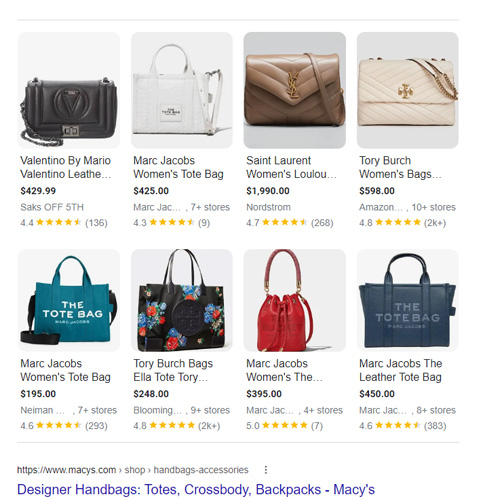



This Post Has 0 Comments